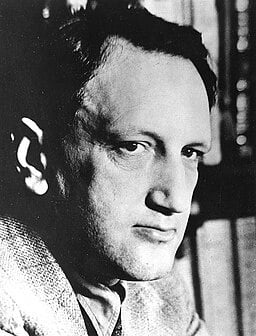
Leopold Infeld was born on August 20, 1898 in Kraków, Poland, then part of the Austro-Hungarian Empire. The first 18 years of his life, were spent in a Jewish ghetto where he, his two sisters and his parents lived in relative poverty. During his early years, Leopold attended a Jewish religious school, but as he entered adolescence, he rejected religion and the Yiddish language, expressing a desire to attend a gymnasium in preparation for a university education. His father, a leather merchant, wanted his to enter the family business, and sent him instead to a commercial school. Unrelenting in pursuing his intellectual interests, Leopold schooled himself in the subjects required to pass the “matura” exams, while at the commercial school, In 1916, at the age of 18, he passed the entrance exams with such high marks, that his father acquiesced and Leopold enrolled at the Jagiellonian University in Kraków.
At the university he focussed on theoretical physics. Since there were no staff members who could mentor him in this field, Leopold spent the 1920–21 academic year in Berlin, where he met Albert Einstein. They became friends and Einstein helped him produce his first paper titled, “Light Waves in the Theory of Relativity.” This became Leopold’s thesis that earned him in 1921 his doctorate in theoretical physics from the University in Kraków.
With the emergence of the Nazi regime in Germany, Infeld became aware of his vulnerability as a Jew. He contacted Einstein who suggested he apply for a grant to visit the Institute for Advanced Study at Princeton. The grant was approved, and Leopold left Poland for America in 1936. During his time at the Institute, Infeld collaborated closely with Albert Einstein working together on improving the mathematical formalism of Einstein’s equations for general relativity. This led to the development of the “Einstein-Infeld-Hoffmann” equations, that describe the motion of planets and other celestial bodies under the influence of gravitational fields.
In 1938, renowned Irish theoretical physicist John Synge offered Infeld a professorship at the University of Toronto, where two decades earlier, Banting and Best had discovered insulin. Infeld accepted the offer and set down roots in Canada, where he met and married mathematician Helen Schlauch, with whom he shared two children whom they raised in Canada. However, Infeld’s pacifism led to rumors that Infeld had planned to provide the USSR with atomic secrets. The ensuing scandal prompted Infeld to return to Poland with his family in 1950.
In Warsaw, he was appointed Head of the Institute of Theoretical Physics, and it appeared that Infeld had finally achieved the post that he had always desired, but he soon felt a gradual oppression under the Communist regime. Risking reprisals he joined initiatives that eventually evolved into the formation of the Worker’s Defence Committee and the Solidarity movement. Infeld’s interests expanded beyond physics, and he became known for his interdisciplinary approach, exploring connections between physics, philosophy, and literature. His book “Whom the Gods Love: The Story of Evariste Galois” became one of the classic biographies of the mathematician who fathered the Theory of Mathematical Groups and died in a duel at age 20.
Leopold Infeld died on January 15, 1968 in Warsaw at the age of 69. His work in general relativity and his efforts to bridge the gap between science and the general public have been his significant legacy.
